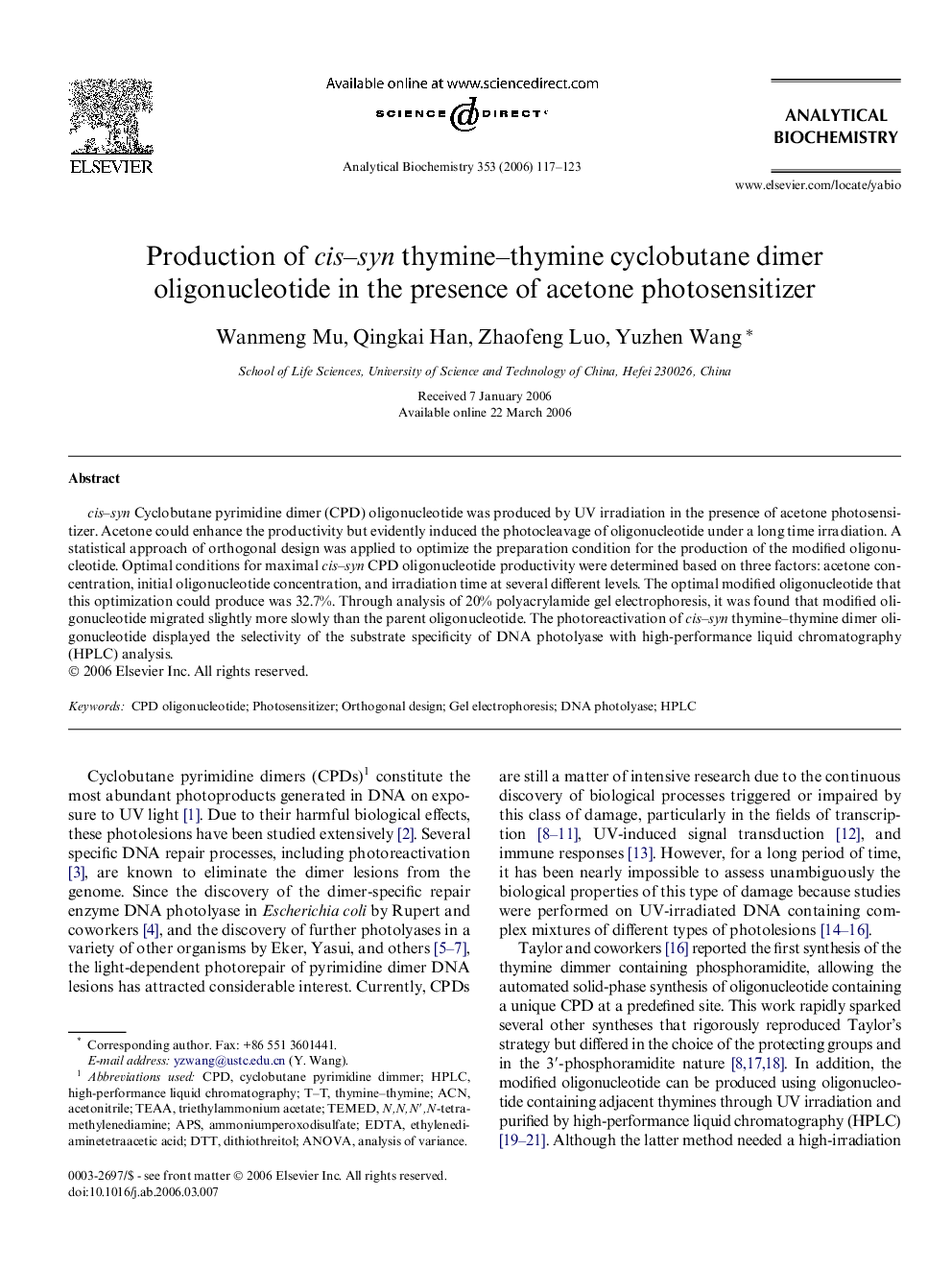| Article ID | Journal | Published Year | Pages | File Type |
|---|---|---|---|---|
| 1177574 | Analytical Biochemistry | 2006 | 7 Pages |
cis–syn Cyclobutane pyrimidine dimer (CPD) oligonucleotide was produced by UV irradiation in the presence of acetone photosensitizer. Acetone could enhance the productivity but evidently induced the photocleavage of oligonucleotide under a long time irradiation. A statistical approach of orthogonal design was applied to optimize the preparation condition for the production of the modified oligonucleotide. Optimal conditions for maximal cis–syn CPD oligonucleotide productivity were determined based on three factors: acetone concentration, initial oligonucleotide concentration, and irradiation time at several different levels. The optimal modified oligonucleotide that this optimization could produce was 32.7%. Through analysis of 20% polyacrylamide gel electrophoresis, it was found that modified oligonucleotide migrated slightly more slowly than the parent oligonucleotide. The photoreactivation of cis–syn thymine–thymine dimer oligonucleotide displayed the selectivity of the substrate specificity of DNA photolyase with high-performance liquid chromatography (HPLC) analysis.
